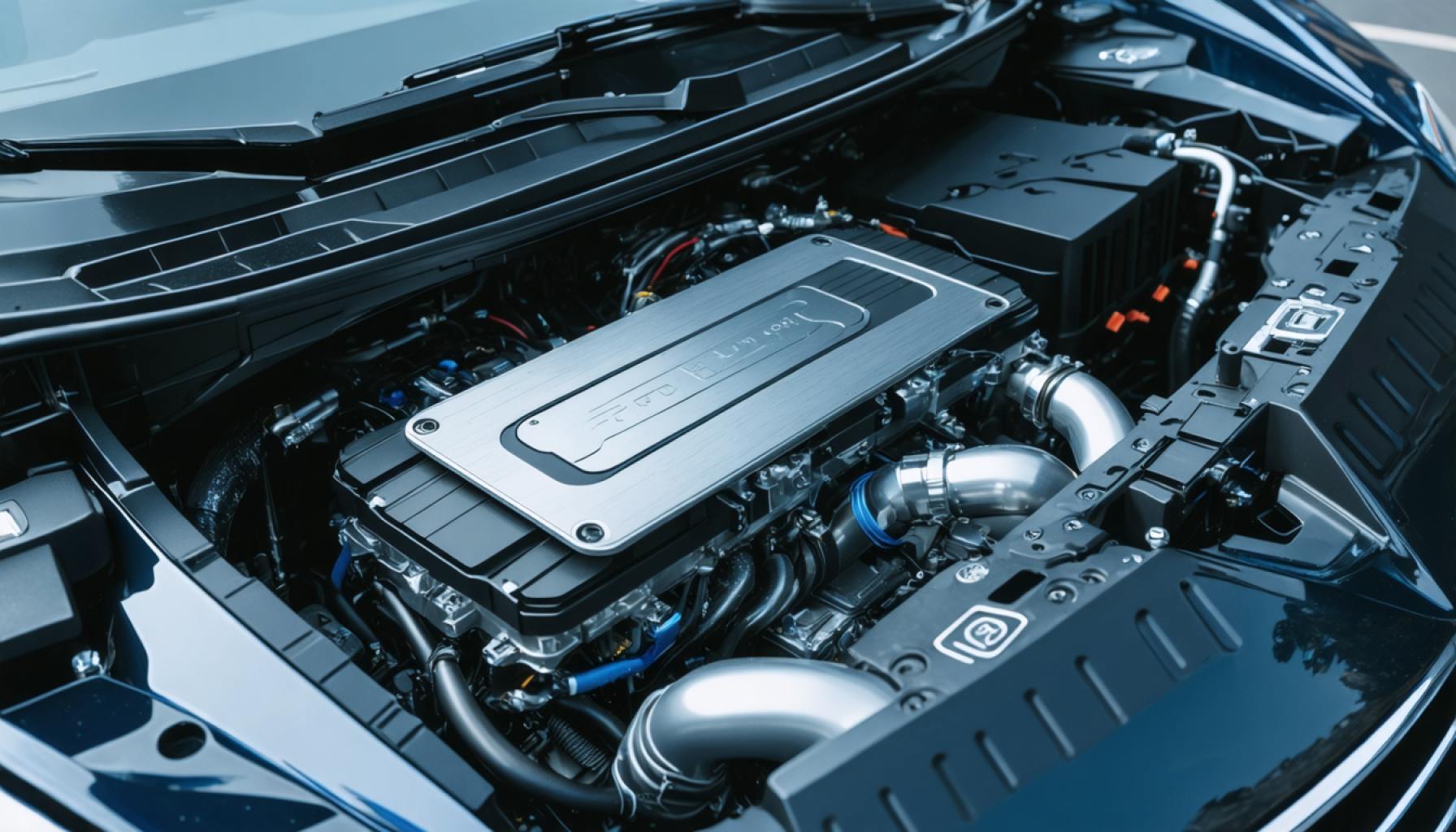- Electric vehicles (EVs) are revolutionizing the automotive industry by offering cleaner, more efficient energy solutions.
- Battery cooling plates are crucial for maintaining optimal temperature and performance in EVs, preventing overheating.
- The market for EV battery cooling plates is expected to grow from $3.1 billion in 2024 to $11.9 billion by 2031, driven by advanced thermal management innovations.
- Ultra-fast charging capabilities present new challenges and opportunities for next-generation cooling systems.
- Asia-Pacific, particularly China, Japan, and South Korea, leads growth, bolstered by significant government incentives.
- High costs of advanced cooling solutions remain a barrier, requiring industry innovation and cost reduction strategies.
- Emerging trends include immersion cooling systems for enhanced heat management in electric commercial vehicles.
- Effective thermal management is essential for maximizing the potential of EVs and ensuring their future success.
The world is not just shifting gears; it’s shifting volts. Electric vehicles (EVs) are penetrating every corner of the automotive market, invigorating the industry with cleaner and more efficient energy solutions. As they spearhead this green revolution, there’s an unsung hero discreetly operating under the hood—battery cooling plates.
Imagine the delicate dance of electrons within a bustling orchestra of high-capacity batteries. With every crescendo in energy demand, these batteries can generate immense heat. Enter the battery cooling plate, a pivotal solution ensuring that vehicles run smoothly and safely, like a cool breeze wafting through a sunlit valley, maintaining the harmony of temperature and performance.
The numbers behind these humble but mighty components are awe-inspiring. Projected to surge from $3.1 billion in 2024 to an impressive $11.9 billion by 2031, the market for electric vehicle battery cooling plates is riding a wave of innovation. This 21.2% compound annual growth rate isn’t just driven by consumer demand for vehicles but also by the ingenious minds engineering evermore advanced thermal management systems.
Peek inside the cabins of these electric marvels and you’ll see sleek designs, intuitive interfaces, and lightning-fast charging capabilities. Yet, as charging speeds escalate—ultra-fast chargers boasting 350 kW and above mark their territory—a challenge emerges. The heat generated is intense. The solution? Next-gen cooling systems, that not only dissipate heat but do so with a finesse akin to a maestro guiding an orchestra through a complex symphony.
Asia-Pacific emerges as the volcanic engine propelling this growth, with countries like China, Japan, and South Korea at the forefront, fortified by government incentives that fuel this electric dream. With a projected regional growth of 24.6% through 2031, the need for sophisticated cooling solutions continues to flourish. China stands as a paragon of innovation and growth in this market, driving the adoption of cooling technologies akin to a modern-day renaissance.
Yet, the journey isn’t without its barriers. High costs, especially for state-of-the-art systems employing advanced materials, pose a significant hurdle. The promise is bright, the potential vast, but bringing down these costs remains a challenge akin to scaling a towering peak, demanding ingenuity and perseverance from industry stakeholders.
On the horizon, electrifying opportunities beckon. The burgeoning demand for electric commercial vehicles with larger battery systems cries out for bespoke cooling solutions. The advent of immersion cooling systems, where batteries are cocooned in non-conductive fluids, offers a tantalizing glimpse at future possibilities with superior heat management capabilities.
In the echoing caverns of this industry, as innovation continues its relentless march forward, one thing is certain: effective thermal management is not just about preventing overheating—it’s about unlocking the true potential of electric vehicles. The future is here, and it hums to the whir of electric motors and the quiet, steadfast assistance of battery cooling plates.
Unveiling the Hidden Heroes: How Battery Cooling Plates are Revolutionizing Electric Vehicles
Understanding Battery Cooling Plates: The Backbone of Electric Vehicles
Electric vehicles (EVs) are leading an eco-friendly revolution, capturing the automotive market’s imagination with their promise of cleaner, more efficient transport solutions. Yet, beneath the sleek exteriors of these vehicles lies an unsung component, pivotal to their performance – the battery cooling plate. This intricate system is crucial for thermal management, ensuring that batteries maintain optimal temperatures even during intense energy demands.
Real-World Use Cases and Industry Trends
Battery cooling plates are increasingly vital as EV technology advances. With ultra-fast charging capabilities on the rise, delivering outputs of 350 kW and above, managing the associated heat becomes imperative for the safety and efficiency of the battery systems. As an example, companies like Tesla and Rivian invest heavily in cooling technologies that ensure longevity and reliability.
Market Forecasts and Regional Growth
The global battery cooling plate market is projected to grow from $3.1 billion in 2024 to $11.9 billion by 2031, marking a robust 21.2% compound annual growth rate (CAGR). The Asia-Pacific region, led by nations such as China, Japan, and South Korea, is at the forefront of this surge, driven by government incentives and a focus on sustainable energy innovation. China, especially, is a hub of growth, paralleling the rise of cooling technologies similar to a modern renaissance.
Challenges and Limitations
Despite promising growth, the industry faces challenges such as high production costs, particularly for state-of-the-art systems utilizing advanced materials like graphene or aluminum composites. These costs are a barrier to widespread adoption, prompting ongoing research into cost-efficient material alternatives.
Innovations in Thermal Management Systems
As battery systems become larger and more sophisticated, particularly in electric commercial vehicles, there is a growing demand for bespoke cooling solutions. Cutting-edge technologies like immersion cooling, where batteries are encased in non-conductive fluids, offer superior heat management and long-term efficiency benefits. However, such advanced systems require further refinement before they can achieve mainstream adoption.
Insights into Future Directions
The future of battery cooling plates is ripe with potential, driven by both necessity and innovation. As EVs continue to grow in complexity and capability, effective thermal management systems will unlock new fronts in vehicle efficiency and battery longevity. Investing in R&D for affordable, advanced cooling technologies is key to overcoming cost barriers and capitalizing on market growth.
Pros and Cons Overview
Pros:
– Enhances battery longevity and efficiency.
– Enables faster charging capabilities.
– Improves vehicle safety and performance.
Cons:
– High production and material costs.
– Complexity in scaling advanced technologies.
Quick Tips for Automotive Stakeholders
1. Invest in R&D: Focusing on more cost-effective materials and production methods can bridge the gap in high-level manufacturing costs.
2. Monitor Trends in Thermal Management: Stay updated with trends like immersion cooling, which may become industry standards.
3. Engage with Policy and Incentives: Leverage government incentives, particularly in leading regions like the Asia-Pacific, to offset costs and accelerate adoption.
4. Collaborate with Innovators: Partnering with startups and tech innovators can drive new thermal management solutions into the mainstream.
For more on how electric vehicles are shaping the future of transportation, visit Tesla and Rivian.








